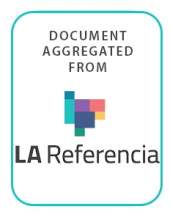/ library resources
Showing items 1 through 6 of 6.Desde el inicio de la ocupación española, el Camino del Sur, último tramo de una red a escala continental, constituyó la vía de comunicación entre la ciudad de Buenos Aires y el pago de la Magdalena a la vez que en sus proximidades se originaban incipientes núcleos urbanos.
Un mapa de deforestación del território mexicano, derivado de Ia sobreposición de dos cartografias de uso del suelo y vegetación de 1993 y 2000, se comparo con variables espaciales como el aislamiento (distancias a Ias carreteras y a Ias poblaciones), Ia topografia (altitud y pendiente), el tipo
Human-induced desertification in the Horqin sandy land in the north-eastern part of China has been reversed since the mid-1970s through re-vegetation. This land cover change affects surface energy and water transfer processes.
The United Nations Environment Programme (UNEP) has proposed methods and thematic areas for data collection that are appropriate to the evaluation of biodiversity. The Heritage Council has identified a paucity of data on habitats in Ireland.
To conserve and manage wetland resources, it is important to inventory and monitor wetlands and their adjacent uplands. Satellite remote sensing has several advantages for monitoring wetland resources, especially for large geographic areas.
Europe is characterized not only by large geomorphological variability but also by a long history of land use. This resulted in a highly variegated landscape.
Land Library Search
Through our robust search engine, you can search for any item of the over 73,000 highly curated resources in the Land Library.
If you would like to find an overview of what is possible, feel free to peruse the Search Guide.


